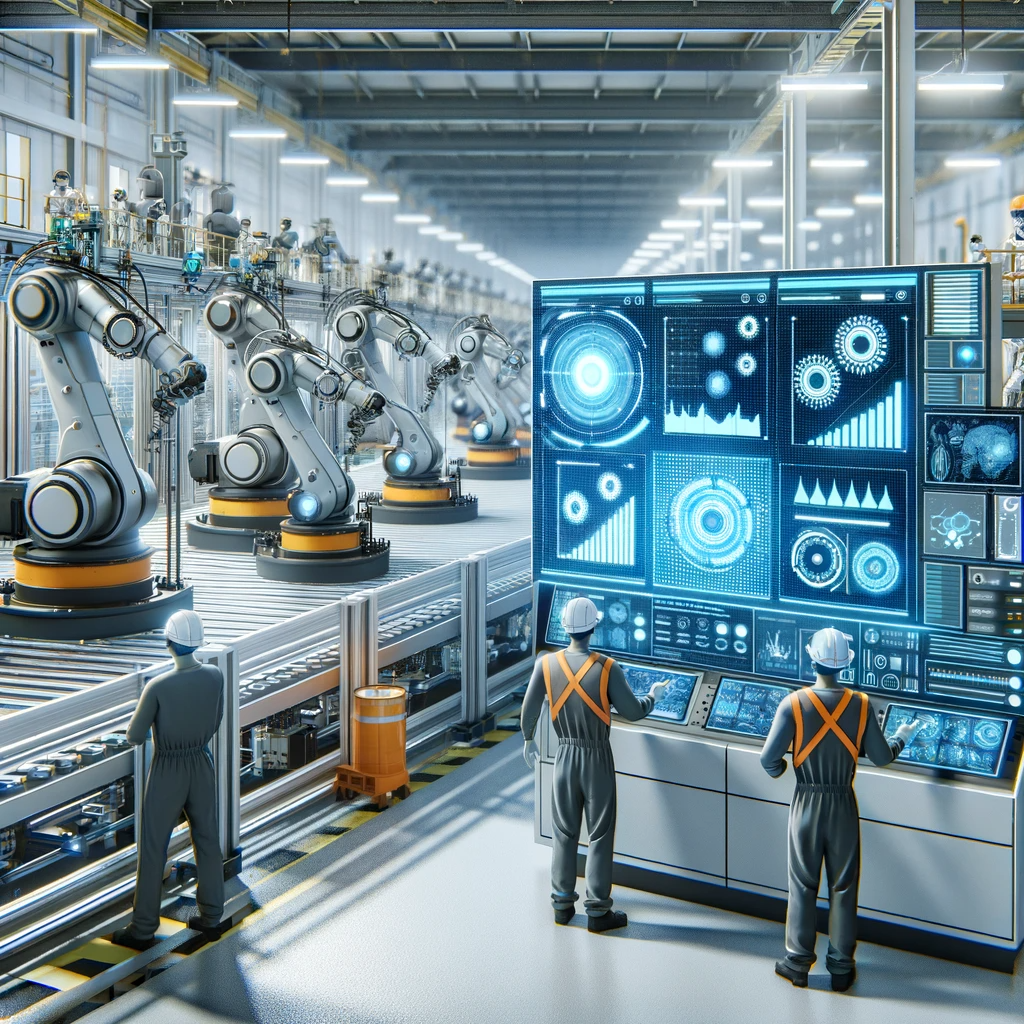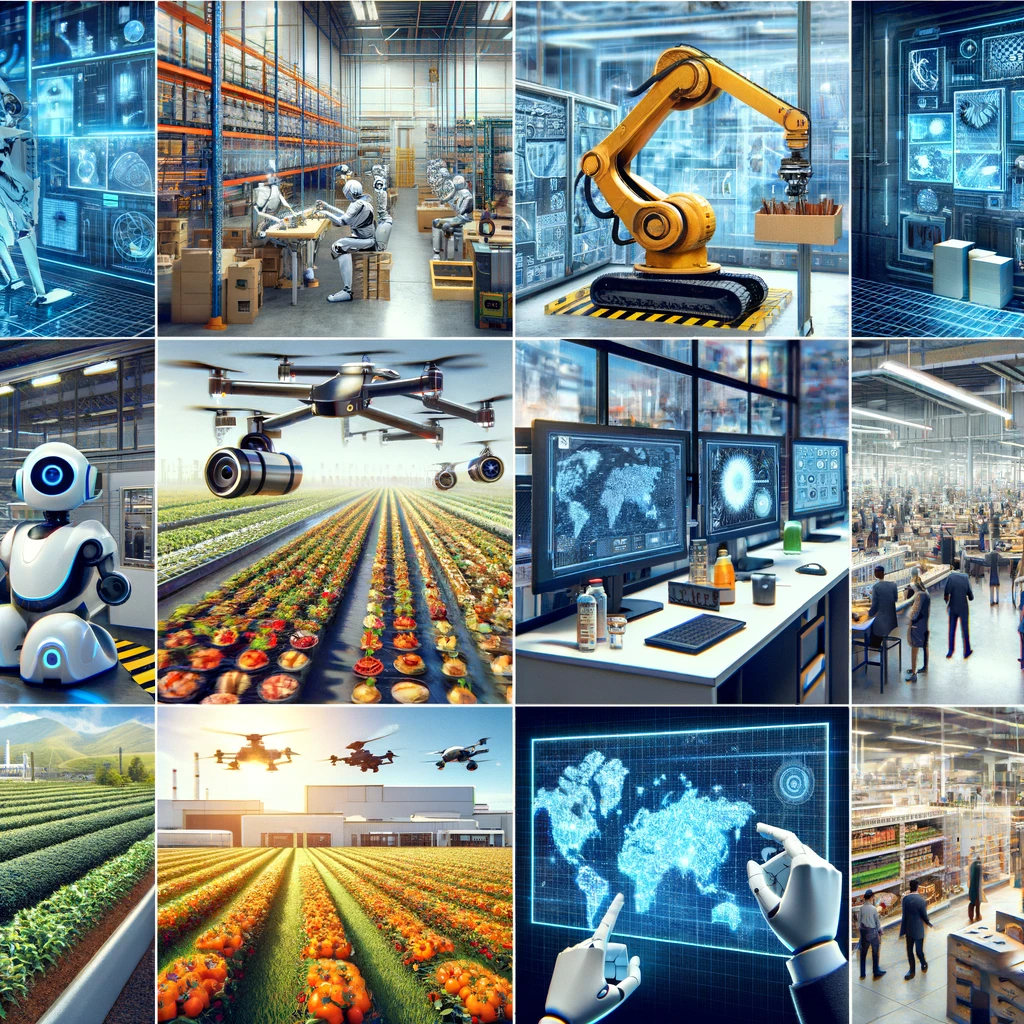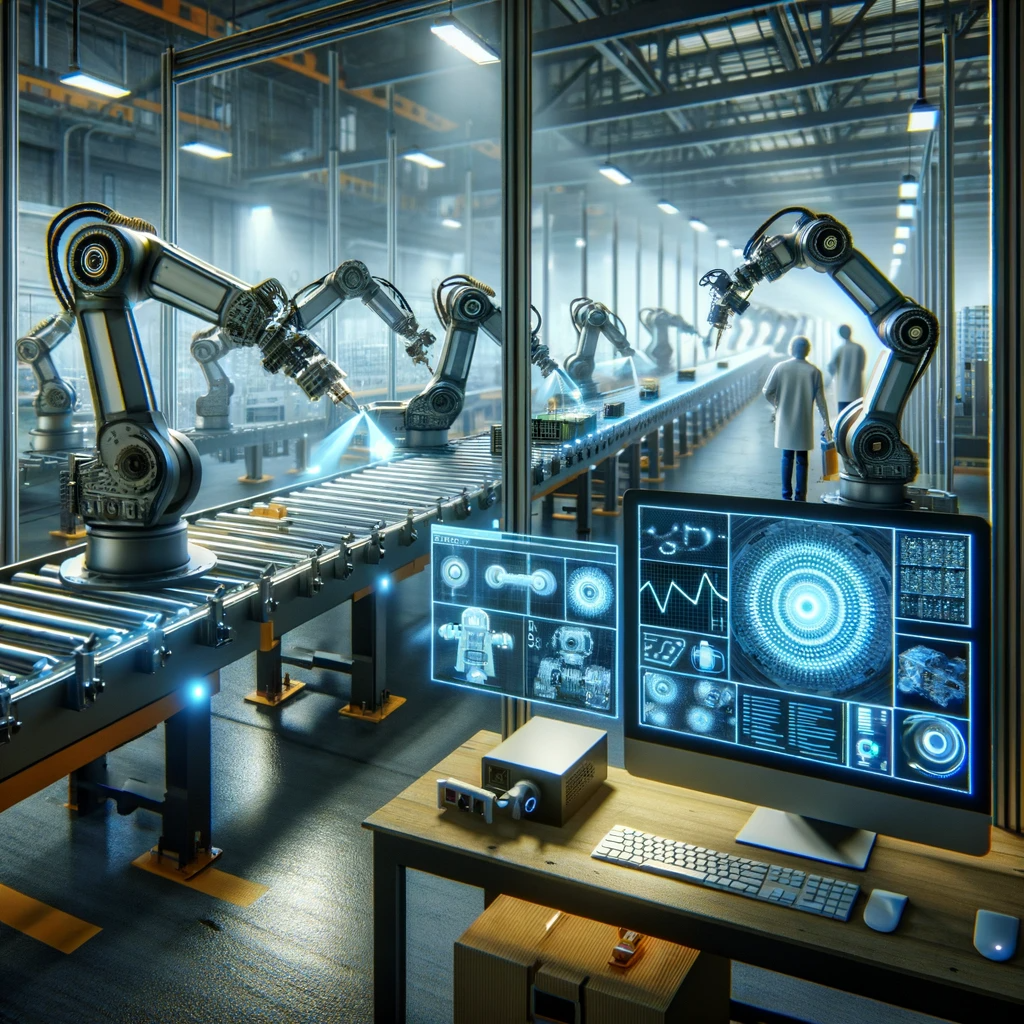- Introduction to Digital Trends in the Industrial Sector
- Machine Vision in Industry
- The Impact of Machine Vision on Automation and Quality Control
- Machine Vision and the Intelligent Supply Chain
- Case Studies and Practical Applications
In the dynamic world of Industry 4.0, 2024 marks a milestone in the adoption and evolution of revolutionary digital technologies. Among these, machine vision emerges as a transformative force, integrating deeply into various aspects of the industrial sector.
Machine vision is a branch of artificial intelligence that enables machines to interpret and process real-world images. From improved quality control to supply chain optimisation, this technology is playing a crucial role in transforming industrial processes.
When combined with other emerging technologies such as the Internet of Things (IoT), advanced robotics, *deep *learning and artificial intelligence, machine vision is not only improving existing operations but also opening up new possibilities for the future of manufacturing and production.
Introduction to Digital Trends in the Industrial Sector
Technological innovation is not just a competitive advantage, but a necessity to survive and thrive in an increasingly demanding and connected global marketplace. Industrial companies are rapidly adopting new technologies to improve efficiency, reduce costs, and offer more personalised and higher quality products and services.
Industry 4.0, which represents the fourth industrial revolution, is a paradigm shift marked by the integration of advanced technologies such as artificial intelligence, the Internet of Things (IoT), robotics and machine vision. These technologies have evolved from futuristic concepts to essential components in modern manufacturing and production.

This era is characterised by unprecedented automation and interconnectedness, where machines not only execute tasks but also collect, analyse and learn from data, working closely with humans to optimise production.
Machine vision, in particular, has excelled in its ability to interpret visual information in real time, revolutionising areas such as quality inspection and predictive maintenance.
Machine Vision in Industry
Machine vision, a field that combines imaging technology, artificial intelligence and data processing, has experienced exponential growth in its application within the industrial sector. Originally, this technology focused on simple identification and classification tasks. However, with the growth of *deep *learning and high-performance computing, its capabilities have evolved significantly.

Machine vision has become an indispensable tool in many aspects of industry:
Quality Control: Using cameras and advanced software, machine vision performs detailed inspections of products on the assembly line, identifying defects more accurately than the human eye.
Process Automation: Used to guide robots in mating, welding and material handling tasks, increasing the speed and accuracy of these processes.
Predictive Maintenance: Machine vision cameras detect subtle changes in equipment and machinery that may indicate the need for maintenance, preventing unplanned downtime.
Logistics: In warehouses and distribution centres, it helps in the classification and tracking of products, improving efficiency in inventory management.
Workplace safety: Machine vision monitors work areas to ensure that safety standards are met, reducing the risk of accidents.
Impact of Machine Vision on Automation and Quality Control
Machine vision has revolutionised automation in industry, taking it to new levels of efficiency and accuracy. This technology allows machines to “see” and “understand” their environment, resulting in more intelligent and adaptive automation. All and all, in the field of quality control, machine vision has set a new standard. Using cameras and advanced software, this technology analyses products in real time on the assembly line, identifying defects imperceptible to the human eye. It can examine everything from structural integrity to variations in colour and texture, ensuring that each product meets high quality standards.
Machine vision has also revolutionised product inspection, allowing 100% automated inspection of products instead of spot checks. This improves overall product quality and reduces costs associated with returns and warranties.
Machine Vision and the Intelligent Supply Chain

By providing a fast and accurate way to identify and track products, this technology has significantly improved efficiency in inventory management and distribution logistics.
Machine vision cameras, capable of reading barcodes, *RFID tags and other markers, facilitate the automation of tasks such as inventory tracking, product sorting and load verification in distribution centres.
This not only speeds up the process, but also reduces human error and improves accuracy in product tracking.
On the other hand, machine vision also plays a crucial role in improving transparency and traceability throughout the supply chain. With the ability to monitor products from production to delivery, companies can offer greater visibility to customers and stakeholders. This is particularly valuable in sectors such as pharmaceuticals or food and beverage, where tracking the origin and handling of products is critical.
For example, if a faulty batch of products is identified at one point in the chain, machine vision can help to quickly trace all related products, enabling a rapid response to minimise the impact.
Case Studies and Practical Applications
Automotive: In the automotive industry, machine vision is used to inspect the mating quality of vehicles. From checking welds, to checking paint and finishes, this technology ensures that each vehicle meets the highest quality standards.
Pharmaceutical: In the pharmaceutical sector, machine vision plays a crucial role in package inspection and labelling, ensuring that medicines are packaged and labelled correctly, which is vital for patient safety.
Food and Beverage: This technology is used to inspect the quality and safety of food. It can detect contaminants, check expiry dates and ensure that the package is airtight.
Electronics: In electronics manufacturing, machine vision is used to inspect printed circuit boards (*PCBs) and ensure that components are correctly soldered and positioned.
Packaging: Machine vision is essential in the packaging industry, where it is used to verify the integrity and correct labelling of packages, ensuring that products reach consumers in perfect condition.
Rail: In the railway sector, machine vision helps in the inspection and maintenance of trains, from detecting cracks in wheels to verifying the correct functioning of signalling systems. This application is crucial to ensure safety and efficiency in rail transport.
Best practice:
Customisation of Solutions: Every industry presents its own unique problems, and customisation of machine vision solutions is key to effectively addressing them.
Integration with Other Systems: The effectiveness of machine vision is enhanced when it is integrated with other automation systems and information technologies, providing a more complete view and more efficient control of processes.
Constant Innovation: Given the rapid technological evolution, it is crucial to keep systems up to date and constantly explore new applications and improvements.

In short, the future of machine vision in industry is not only promising, but also fundamental to progress and innovation in the era of Industry 4.0. With its ability to improve efficiency, quality and safety, this technology is ushering in a new era in manufacturing and production.
At *Opsis, we are here to help you make the most of this revolutionary technology, guiding you towards a more efficient, safer and more competitive future. We offer you not only cutting-edge technology, but also expert service and advice to ensure that integrating machine vision into your business is beneficial.


